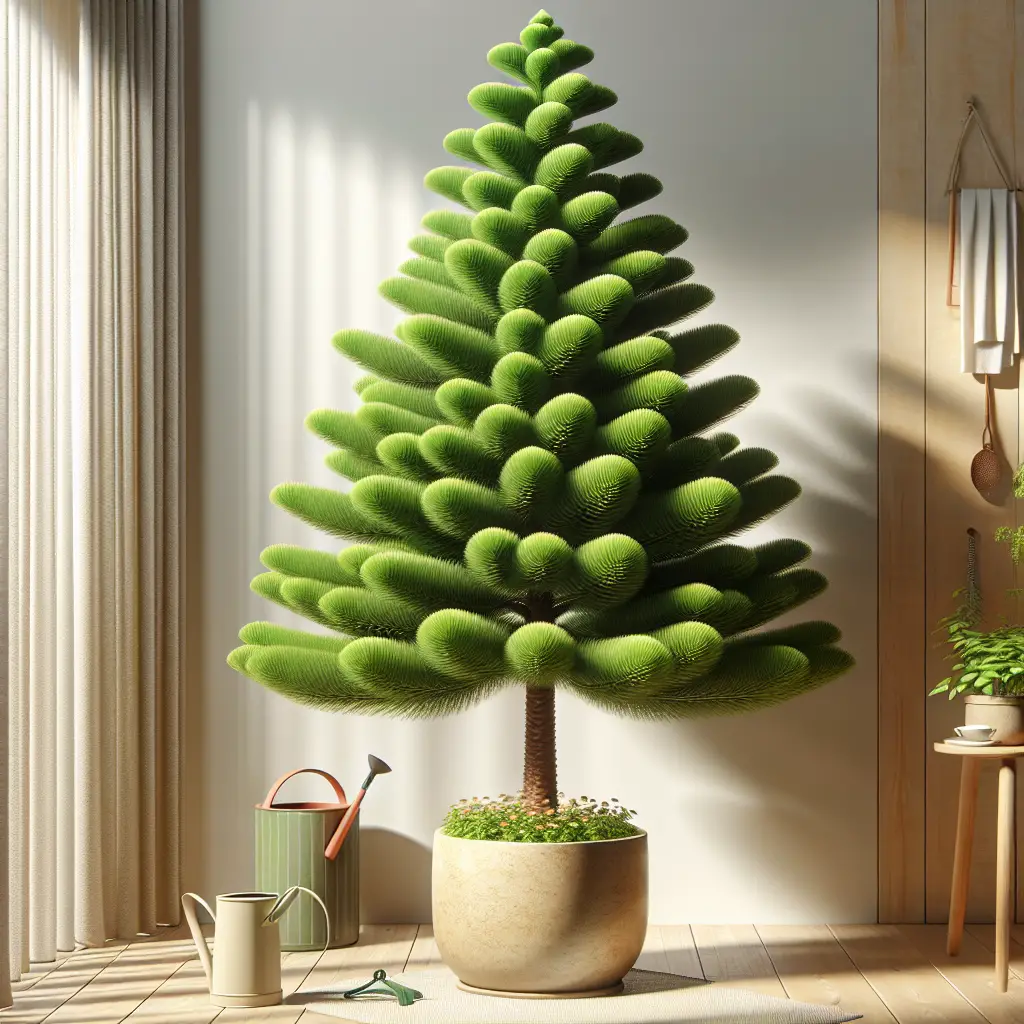Deterring Woodpeckers from Damaging Tree Bark
Updated July 9, 2024 at 9:18 pm
Explore humane and effective strategies to keep woodpeckers at bay and protect the integrity of your trees’ bark—a comprehensive guide to preserving your arboreal friends.

Understanding Woodpecker Behavior
If you've noticed the unmistakable rat-a-tat-tat at your place, you might be dealing with woodpeckers. These birds are known for their distinct pecking behavior, which, although fascinating, can also lead to damage on tree bark.
Woodpeckers peck for several reasons: to find food, to create nesting sites, or to communicate. However, as they seek out insects or sap, or carve out a home, they can harm the trees in your yard.
Identifying At-Risk Trees
Not all trees are equally appealing to woodpeckers. Trees with soft bark, like pine or cedar, tend to attract them more than hardwoods. Stressed, diseased, or infested trees are also more susceptible, as they provide easier access to insects.
To protect your trees, it's essential to maintain their health and keep an eye out for signs of distress that might attract woodpeckers.
Tree Protection Strategies
Barriers are an effective way to deter woodpeckers. Hardware cloth, burlap, or netting placed around the circumference of the tree can prevent them from pecking at the bark. Ensure that these materials are secured a few inches away from the trunk to avoid harm to the tree.
Another tactic is to apply tactile repellents to the areas where woodpeckers are active. These sticky substances can discourage pecking but may need to be reapplied periodically.
Reflective Objects and Noise-Making Devices
Woodpeckers are skittish creatures, and using reflective and noise-making objects can deter them. Hanging items such as old CDs, aluminum strips, or wind chimes can create movement and sound that frighten these birds away.
While effective, these methods can sometimes require persistence, as woodpeckers might habituate to them over time, necessitating regular changes in your strategy.
Commercial Repellent Products
There are various repellent products available to discourage woodpeckers. Reflective tape such as Bird-X Irri-Tape is often recommended by users. This holographic tape flashes bright reflections and makes rustling noises when it moves in the wind, scaring woodpeckers away from your trees.
Based on reviews, Bird-X Irri-Tape is a favored choice among garden enthusiasts due to its ease of use and effectiveness. Here are some of the pros and cons:
Pros
- Reflective material frightens woodpeckers effectively
- Easy to install on affected areas
- Durable in various weather conditions
Cons
- May need regular repositioning to maintain effectiveness
- Some birds may eventually habituate to the presence of the tape
From the sounds of it, people have found quite a bit of success when it comes to protecting their cherished trees with Bird-X Irri-Tape.
Find This and More on Amazon
Attractants to Avoid
Minimizing attractants is as necessary as deploying deterrents. Ensure that your outdoor spaces aren’t welcoming to woodpeckers. Remove dead trees and keep gutters clean to prevent insect infestations, which are prime food sources for these birds.
Additionally, considering the type of siding on your home is critical; woodpeckers may be drawn to wooden exteriors like cedar and can cause damage similar to that on trees.
Creating Alternative Pecking Sites
One innovative solution is to provide alternative pecking surfaces for woodpeckers. Setting up a dead tree or a log in your yard, preferably away from the trees you wish to protect, can offer woodpeckers a more desirable location to peck.
This way, you redirect their behavior rather than merely trying to stop it, which can be a more sustainable and wildlife-friendly approach.
Humane Removal Techniques
If you've tried other methods and still encounter persistent woodpecker activity, professional humane removal might be the next step. Experts can assist in the safe trapping and relocation of these birds to an environment where their behavior will not be problematic.
However, before taking any actions, do note that some woodpecker species are protected under the Migratory Bird Treaty Act, so be sure to check with local wildlife agencies first.
Nesting Box Installation
Installing a nesting box might provide an enticing alternative to the woodpeckers drilling for nesting sites in your trees. Once accustomed to the box, they may prefer it over the labor-intensive process of excavating tree bark.
Nesting boxes designed specifically for woodpeckers, such as those from Songbird Essentials, have received positive feedback for their proper sizing and durability. The boxes can be a fantastic aid in redirecting the natural instincts of woodpeckers to less harmful locations.
Landscape and Garden Maintenance
Just like creating a pollinator-friendly garden can enhance your yard's ecosystem, practicing diligent landscaping can deter woodpeckers. Keep shrubs trimmed and clear away dead branches, as these can host insects that attract woodpeckers.
Regularly inspect for signs of infestation and treat them promptly to prevent woodpeckers from being lured to your trees for a meal.
Understanding and Adapting to Seasonal Patterns
Woodpecker activity may increase during their breeding season in spring. Being proactive and implementing deterrent methods early in the season can prevent them from establishing a pattern of behavior in your yard.
Conversely, during the non-breeding season, you may relax some of your strategies, but remain vigilant and ready to react should the activity spike unexpectedly.
Professional Consultation
When in doubt, consulting with a certified arborist or a wildlife expert can provide tailored solutions to your woodpecker problem. They can offer insights into the particular species in your area and the most effective deterrent methods for your situation.
Remember, each tree and each garden is unique, and a professional assessment can help safeguard your green space effectively and humanely.
Final Thoughts
Deterring woodpeckers from damaging tree bark requires a combination of strategies and a good dose of patience. From creating barriers and alternative pecking sites to using visual and auditory deterrents like the Bird-X Irri-Tape, each method contributes to protecting your trees.
With a little effort, you can maintain the balance between enjoying the presence of these fascinating birds and keeping your trees safe and healthy. Continue to nurture your love for nature, and soon, you'll discover that coexisting peacefully with wildlife is entirely possible – and rewarding.
Chemical Repellents: Are They Effective?
Some homeowners might consider chemical repellents as a deterrent for woodpeckers. Products like Methyl Anthranilate, a grape-scented, non-toxic chemical, claim to repel birds by irritating their senses. However, such solutions often produce mixed results.
While some users report success, others find that woodpeckers quickly grow accustomed to the smell. It’s important to select repellents that are environmentally friendly and safe for other wildlife, pets, and humans in the vicinity.
Pruning as a Preventive Measure
Pruning trees can also play a role in preventing woodpecker damage. By removing dead or decaying branches, you reduce the places where insects can burrow, thereby making the trees less attractive to these birds seeking food.
If you’re not sure about how to prune properly, it’s worth considering a professional service to ensure trees are pruned correctly, promoting tree health and reducing attrition points for woodpeckers.
Home Remedies and Folk Solutions
Various home remedies and folk solutions have been spread around as woodpecker deterrents. Some folks swear by hanging plush toy snakes or owls as scare tactics. While these might work temporarily, woodpeckers may eventually realize they’re not a threat.
On the other hand, using garlic or peppermint oil sprays are said to create an odor that woodpeckers dislike. Although anecdotal, these methods might be worth a try for those preferring to avoid commercial products.
The Role of Predators in Natural Deterrence
Introducing or encouraging the presence of natural woodpecker predators can be a passive deterrent. For example, if your area has native birds of prey, keeping a habitat that’s conducive for them may help in keeping the woodpecker population in check.
Keep in mind, however, that this method does come with its own set of complexities, such as the potential impact on the broader ecosystem in your garden.
Impact of Consistent Monitoring
Regular monitoring of your property is essential. By quickly addressing the initial signs of woodpecker damage, you can implement deterrent methods immediately, which can prevent the birds from causing more significant harm.
Effective monitoring includes checking for fresh peck marks, listening for pecking sounds, and looking for woodpecker droppings below trees.
Community Approaches to Woodpecker Deterrence
In areas where woodpecker damage is widespread, community-wide efforts can help address the problem. Neighborhood associations can organize workshops and collectively implement deterrent strategies to manage woodpecker populations.
Such coordinated actions can be more effective than isolated efforts, as woodpeckers discouraged from one yard may simply move to another nearby site.
Learning from Successful Case Studies
It could be incredibly helpful to look at case studies or accounts from those who have successfully mitigated woodpecker damage. By learning from their experiences, you can adapt their successful methods to your circumstances.
Often, a blend of multiple solutions — both commercial products and natural deterrents — yields the best results.
The Importance of Patience and Perseverance
Deterring woodpeckers is not usually a quick fix, and it can require a significant amount of time and effort. Being patient and willing to experiment with different approaches is key to finding a long-term solution.
It’s crucial to continually adapt your methods and remain observant of the woodpeckers’ habits and responses to the changes you make.
Providing for Woodpeckers’ Needs
As with many wildlife issues, it may also be beneficial to address the underlying needs of woodpeckers. By providing sources of food like suet feeders, away from the trees you want to protect, you can divert their attention and fulfill their foraging requirements elsewhere.
Ensuring these food sources are maintained year-round can help in keeping woodpeckers satisfied and your trees undamaged.
Seeking Advice from Bird Watching Communities
Engaging with local bird watching groups or forums can offer additional insights. Bird enthusiasts often have a wealth of knowledge and may share novel tips and tricks that have worked for them or others in deterring woodpeckers.
Don’t underestimate the value of communal knowledge when looking for solutions to your woodpecker problem.
Understanding Legal Protections of Woodpeckers
As mentioned earlier, some woodpecker species are protected by law. Before undertaking any deterrent measures, make sure you are informed about the legal status of the species you’re dealing with.
Contacting wildlife authorities can provide you with the necessary guidance to ensure that your deterrent methods are both effective and legal.
Alternative Landscaping Choices
Lastly, if you’re planning a new garden or making changes to your landscaping, consider choosing tree species that are less attractive to woodpeckers. Consulting with a local nursery or a horticulturist can give you ideas for tree options that are hardy and less prone to pest infestation, thereby reducing the likelihood of woodpecker damage.
By being preemptive in your choice of plants, you can design a landscape that is naturally less appealing to woodpeckers.
Boosting Natural Defenses of Trees
Trees with robust health are less likely to be targeted by woodpeckers. To enhance your trees’ natural defenses, consider regular fertilization and proper watering. A well-nourished tree can ward off pests more effectively, which in turn makes it less appealing for woodpeckers searching for food.
Establishing a routine care schedule for your trees ensures they have the strength to recover from any incidental pecking without taking significant damage.
Assessing the Effectiveness of Your Approach
After implementing various deterrent methods, it’s crucial to assess what’s working and what’s not. Observing the woodpecker activity, or lack thereof, provides valuable feedback which can guide your future strategies.
If certain deterrents like the Bird-X Irri-Tape are showing success, you might consider intensifying these measures. Conversely, if other tactics aren’t delivering, it’s time to tweak your approach.
Education on Woodpecker Preservation
Educating yourself and others about the ecological importance of woodpeckers is important. These birds contribute to controlling insect populations and help maintain the health of our forests and gardens. By understanding their role, we can strike a balance between preservation and deterrence.
For those with children or community members interested in wildlife, sharing information about woodpecker behavior and habitat needs can enhance community-wide conservation efforts.
Conclusion
In summary, deterring woodpeckers from causing damage to tree bark is a multi-faceted endeavor that blends prevention, deterrence, and ethical wildlife management. It requires understanding the behavior of woodpeckers, identifying at-risk trees, and utilizing a variety of methods like physical barriers, tactile repellents, and commercial products. Yet, it’s equally important to always consider the ecological significance of these birds and to approach their deterrence with care and legality in mind.
With diligent application of the strategies discussed and an ongoing commitment to monitor and adapt to the woodpecker activity in your area, you can protect your trees while still enjoying the lively presence of these remarkable birds in your garden. Just don’t forget that occasional patience and restructuring of your efforts might be required, as your fine-feathered neighbors are quite resourceful and can adapt to changes in their environment.
Shop more on Amazon
Flowers & Plants Team
Flowers & Plants Team


